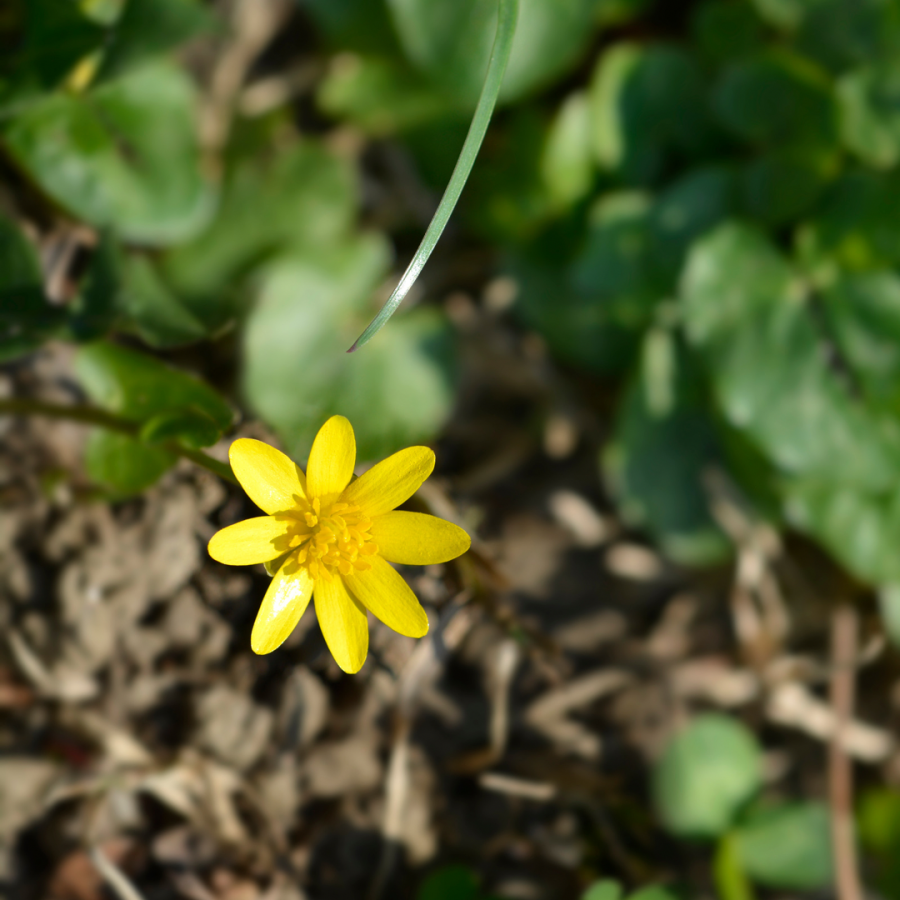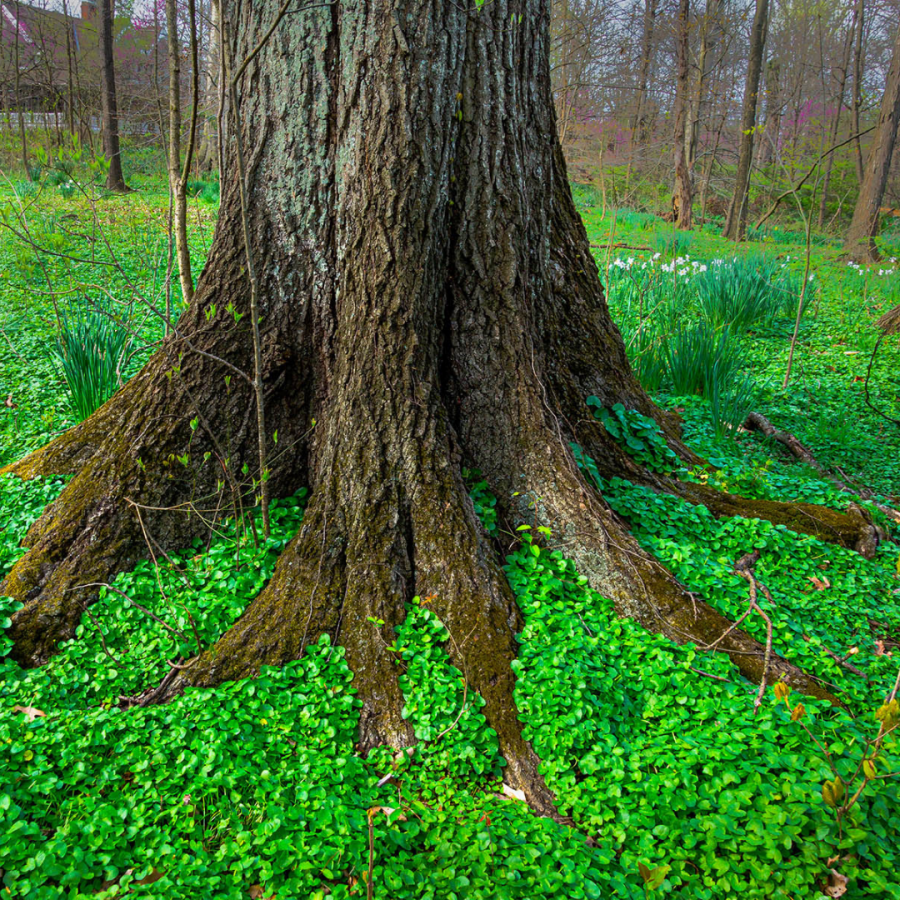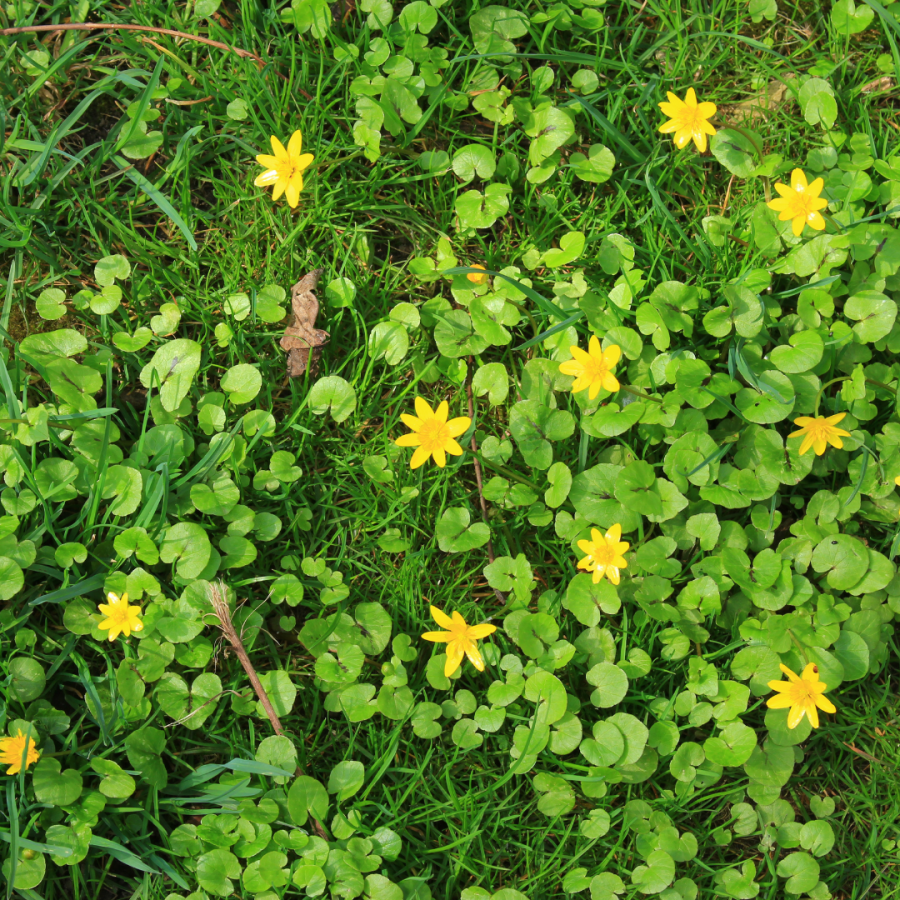Blog
A Seriously Awful Weed

By Tim Nabors, Naturalist
When it comes to invasive plants, this one may be the worst! It is one seriously awful weed.
At the Cincinnati Nature Center, we are often approached by guests during the early spring who are curious about some of the wildflowers that they have encountered while hiking our trails. One question that is always asked every year is “What is that lush green carpet with the beautiful yellow flowers that covers so much of the hillsides?”
The answer they will receive back from all NAture Center employees is usually quite the cautionary tale.
This little plant that covers our hillsides is called Lesser Celandine (Ficaria verna). Also known at pilewort or fig buttercup, this plant is native to Europe, North Africa, and parts of Asia. It was brought to North America as an ornamental garden plant because of its hardiness and beauty.

Unfortunately for our native plants, lesser celandine does not play nice, not nice at all! This little plant, when given the chance, can destroy habitats it establishes in—often to the point of no return.
As with many introduced plant and animal species, if they can survive and thrive in a new place away from their native lands, they likely will not have any natural predators or diseases to contend with to keep it in control. Lesser celandine falls into this category. Without natural predators or diseases, it runs wild everywhere.
Lesser celandine is an extremely aggressive plant. The lovely carpet of green and yellow you see are one of the first plants to emerge—giving it a huge advantage over the native vegetation for food and sunlight. This also gives little chance for the native spring ephemerals, such as trout lilies or Dutchman’s breeches, to access sunlight and grow.

For the past three years, lesser celandine has been on the Ohio Department of Agriculture’s invasive plant list. It’s illegal to sell, offer for sale, propagate, distribute, import, or intentionally cause the dissemination of this and other problem imported plants.
If, and when, you find lesser celandine in your backyard habitat, it’s best to remove it as quickly as possible. You will notice the beginnings in small patches on your land in the early spring. Glossy leaves and small yellow flowers give it a distinctive look.
To remove small patches, dig all the lesser celandine out with a shovel and be sure to go deep enough to remove all roots and small tubers (look like teeny tiny potatoes) that this plant will leave behind. These little round tubers allow lesser celandine to regrow even more aggressively the following year.
Once dug up, the entire plant should be bagged and thrown in the garbage. Do not throw this plant into your mulch pile! For larger infestations of lesser celandine, the only known and recommended solution to getting rid of it is the use of herbicides.
The moral of this story? If you see this little plant on your land or in your yard this spring, don’t be fooled by the pretty yellow smile! It will eventually turn into a monster. Get it out!